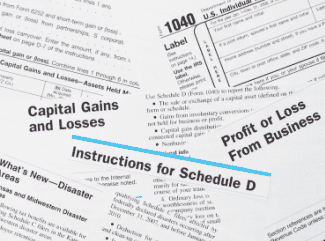FDIC Loan Mod Plan Flawed
by Jack Guttentag, Inman News
“Do you have an opinion about the FDIC plan to jumpstart loan modifications as a way to reduce foreclosures?”
Yes, I admire FDIC, under the leadership of Sheila Bair, for taking the lead in attacking the root source of the financial crisis: the vicious cycle of declining home prices and foreclosures.
I share FDIC’s view that the way to break that cycle is to modify mortgage contracts in ways that enable borrowers in distress to return to good standing and stay there — AND to do enough of them to make a difference. The FDIC plan has two major provisions: (1) a risk-sharing arrangement where the government would absorb up to 50 percent of the losses in the event of a re-default; and 2) a modification that would reduce the borrower’s monthly payment to 31 percent of income.
In my view, the FDIC model falls short because a) it does not target negative equity, b) it is unlikely to induce servicer/investors to modify more loans, and c) it provides no way for government to get repaid.
Negative Equity Is the Elephant in the Room: Negative equity is when the loan amount exceeds the value of the property; it is what borrowers term being “upside down.” There is a lot of wishful thinking that so long as borrowers can afford the payment, they will continue to pay, disregarding their negative equity. That may have been true historically when negative equity was unusual — and when it did arise, it was small. There is mounting evidence, however, that substantial negative equity causes some borrowers to default who can otherwise afford their payments.
Further, negative equity has enormous social costs above and beyond the impact on foreclosures. Borrowers with negative equity have no mobility; they can’t move to where the jobs are without defaulting on their mortgage. Members of the armed forces with negative equity are a particular source of concern, because their transfer to another base almost invariably results in default. Borrowers with negative equity also are likely to cut their discretionary spending, which is bad news for an economy in recession.
The FDIC plan does not require balance write-downs, and its recently released “Mod-in-a-Box” indicates that it views balance write-downs as the last resort in making loan payments affordable. In FDIC’s proposed sequence of steps in getting the expense-to-income ratio down to a targeted level, balance reduction comes into play only when the combination of rate reduction and term extension is not sufficient.
Note: I am told that FDIC avoided balance reductions because they are prohibited on mortgage-backed securities. The last-resort balance reduction described above is only temporary — the borrower has to repay it eventually. While it is true that most pooling and servicing agreements that govern the actions of firms servicing loans in security pools do not explicitly authorize balance reductions, the trustees that represent the interests of investors can authorize them. If necessary, furthermore, government could pass legislation that protects servicers from legal liability if they accept balance reductions that in the best judgment of the servicer are in the interest of investors.
The FDIC Plan Is Unlikely to Stimulate Many More Modifications: Under the FDIC plan, loss-sharing is progressively scaled down from 50 percent to 20 percent as the ratio of loan balance to property value increases from 100 percent to 150 percent. Above 150 percent, there is no loss sharing at all. Furthermore, the plan does not cover losses on re-defaults unless the modified loan has performed for six months or longer.
These restrictions raise a serious question as to whether servicers and investors will be motivated by the FDIC plan to modify any more loans than they would have otherwise. This is particularly true of the many loans today with high loan balances relative to property value, because re-default rates on such loans are likely to be high, the government’s loss share will be low, and a high proportion will occur in the first six months when there is no loss sharing at all.
Note: FDIC requires that servicers who modify one loan under the FDIC plan modify all their loans, in this way discouraging servicers from picking and choosing the loans to modify. But this “all or none” requirement could result in their choosing none.
The FDIC Plan Has No Recovery of Government Outlays: Under the FDIC plan, none of the dollars paid out by the government to cover losses on re-defaults are going to come back. Presumably this is why FDIC felt it necessary to restrict loss-sharing in the ways described above.
In my view, a successful government plan should a) require a write-down of loan balances on all modified loans with negative equity; b) incent servicers/investors to modify more loans through government contributions to write-downs; c) remove concerns of servicers/investors about re-defaults by providing complete insurance coverage on modified loans; d) provide a mechanism for the government to recover its outlays in the future when the economy has turned around and the government has to reduce its deficit; and e) ensure that the program is administered effectively by shifting a major part of the workload from understaffed mortgage servicers to other sectors with excess capacity. A workable plan that incorporates all five of these components can be found on my Web site, www.mtgprofessor.com.
The writer is professor of finance emeritus at the Wharton School of the University of Pennsylvania. He is indebted to Igor Roitburg for his useful suggestions. Comments and questions can be left at www.mtgprofessor.com.
What’s your opinion? Leave your comments below or send a letter to the editor. To contact the writer, click the byline at the top of the story.
Copyright 2008 Jack Guttentag
See another Jack Guttentag feature, Jumbo Loans: Where Art Thou?
American Apartment Owners Association offers discounts on products and services related to your commercial housing investment including REAL ESTATE FORMS, tenant debt collection, tenant background checks, insurance and financing. Find out more at www.joinaaoa.org.
See other articles on Real Estate Financing.
To subscribe to our blog, click here.















 Accessibility
Accessibility